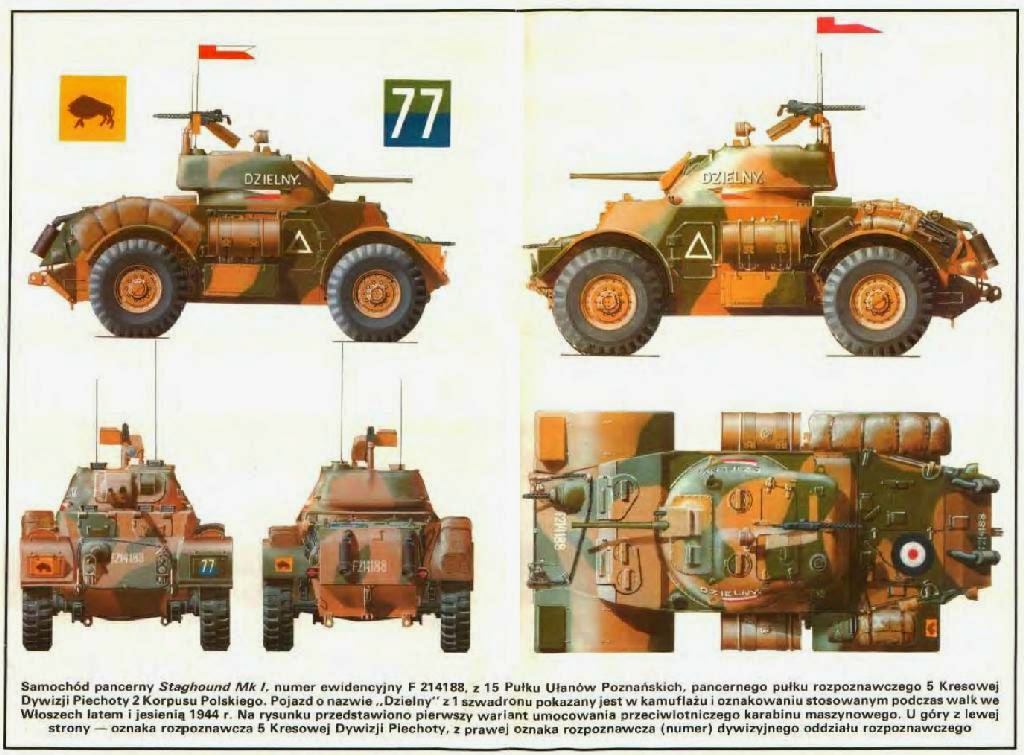
Chevrolet’s fortune with the T17E1 was much brighter. The first pilot vehicle also was delivered to Aberdeen Proving Ground in March 1942. After inspection, it was sent along with the second pilot to the General Motors Proving Ground for tests. Although many mechanical failures occurred, they appeared to be easily corrected. The changes involved the gear box, differential, universal joints, and splines. A wooden mock-up of the production model was completed on 16 June 1942 and the final stowage was approved. The production vehicle carried a crew of five, two men in the hull and three in the turret, with a gross weight of 32,000 pounds. The hull itself was a main structural element so no frame was required. The springs, steering gear, and transfer case were attached directly to the hull.
The turret was similar to that designed for the light tank T7, but the thickness was reduced to 1 1/4 inches at the front, sides, and rear and 3/4 inches at the top. The hull armor ranged from 7/8 inches at the front to 3/8 inches at the rear. The frontal armor of the hull and turret was angled at 45 degrees from the vertical. Turret armament consisted of a 37mm gun M6 and a .30 caliber machine gun in a coaxial mount. A .30 caliber machine gun was on the turret roof and another such weapon was mounted in the right front hull. The cruising range was extended by jettisonable fuel tanks installed on each side of the vehicle. Two 97 horsepower, six cylinder, GMC engines were mounted in the rear hull. The engines could be operated simultaneously or individually. A Hydramatic transmission for each engine transmitted its power to a single, two speed, transfer case. From there, drive shafts powered the front and rear axles. Named the Staghound I, the T17E1 was authorized for production to fill British requirements. A total of 2,844 T17E1s were built from October 1942 through December 1943. The T17E1 was never standardized, although standardization as the armored car M6 was proposed at one time and some of the name plates bear that designation in anticipation of standardization.
Although the Staghound was widely used by the British forces, it was not a popular vehicle. Designed for the desert, it was considered to be too large and heavy for operations in Italy and France. The following comments were taken from the history of the 11th Hussars entitled “The Eleventh at War” by Brigadier Dudley Clarke.
“The Staghound was an American product intended to replace the Daimlers at the squadron and regimental headquarters. It was a huge vehicle, 8 feet broad and 13 tons in weight carrying a crew of five with a 37mm gun and a .3 Browning machine gun. The 11th Hussars found it unwieldy and it never earned their affection.”
Staghound T17E1 armored car specification
Creator: United States of America
User: Britain, Canada
Denomination: T17E1 Armored Car
Number built: 4,094
Length: 5,49 m
Width: 2,69 m
Height: 2,36 m
Weight: 14,000 kg
Maximum speed: 89 km/h
Operational range: 724 km
Secondary armament: one 37 mm M6 gun
Main armament: three 7,62 mm machine guns
Engine: two rear-facing 6-cylinder GMC 270, 97 hp each (72 kW)
Crew: 5
Armor: from 13 mm to 51 mm